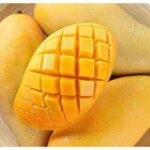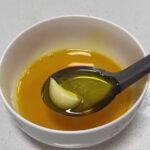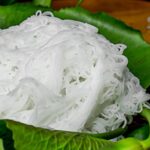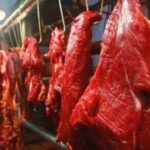The key to distinguishing between real and fake leather jackets is to carefully and meticulously consider a combination of factors. Otherwise, you can easily overpay for a fake leather jacket.
Distinguishing Real from Fake Leather
The market is flooded with fake leather jackets that are very well crafted and can easily fool less savvy consumers. The following tips on how to tell real from fake leather will help you become a smarter shopper.

Knowing how to distinguish real from fake leather will help you avoid being scammed. (Photo: Fether Skin)
Check the Price
The biggest difference between genuine and fake products is the price. A real leather jacket can cost twice as much, or even tens of times more, than a faux leather jacket made from synthetic materials.
If you come across a stylish leather jacket that is being sold at a low price, it is most likely made from synthetic leather. In this case, you can confirm your suspicion in several ways.
Examine the Texture
Real leather can feel rough or smooth depending on its quality and type. If it feels too smooth or plastic-like, it is likely to be fake. Real leather is usually less consistent in texture as it is natural and harder to manipulate.
When observing real leather, the surface will appear slightly rough or have some bumps and imperfections. The grain pattern of real leather looks very natural. Depending on the tanning and manufacturing techniques used, the surface of the leather will have a certain level of smoothness or softness, but it will still retain relatively noticeable imperfections.
Inspect the Edges
The edges of leather clothing or furniture can also be a telltale sign of whether it is real or fake. Fake leather has perfect, smooth edges that feel slightly plastic-like, whereas real leather has rougher, more natural edges.
Check the Label

Checking the label is a way to help you distinguish real from fake leather. (Photo: eBay)
Manufacturers who want to prove that their products are genuine will always indicate this on the label. If the label says “synthetic material” or if the product has no label, you can assume that it is not made of real leather. Of course, used items may have lost their labels.
Smell the Leather
Smelling the product is another way to distinguish real from fake leather. Real leather has a distinctive smell that fake leather and synthetic leather cannot replicate. Genuine leather usually has a musty, animal-like scent from the tanning process. If you have smelled real leather before, you will likely recognize it for life as it is very unique. On the other hand, fake leather often smells like nylon or chemicals (similar to the smell of plastic or paint thinner).
Note: The tip of distinguishing real from fake leather by smell may not apply to all leather items. Many dyed leather items will not retain the smell.
Examine the Surface
Check the pores on the leather. If they look too perfect, it is unlikely to be real leather. Real leather has inconsistent pores. In contrast, industrial leather has a consistent and repetitive pattern.
Additionally, when examining the surface of real leather closely, you will notice small pores. In contrast, the surface of fake leather is usually smooth, sleek, and very flat. Real leather feels smooth, soft, and supple to the touch; when pressed firmly, an indentation will appear and then disappear (elasticity). Meanwhile, synthetic leather has a rough surface and is less elastic.
To enhance your skills in distinguishing real from fake leather, take the time to compare a fake leather item that you know for sure is not genuine with a real leather item that you are certain is authentic. After this “learning” session, you will be able to easily identify whether the item you are about to purchase is genuine and worth the price.
Test its Water Absorption

Real leather can absorb water due to the presence of pores. (Photo: Aero Leather Clothing)
Real leather has a unique ability to absorb water due to the presence of pores. Dark patches will appear where there is moisture until the water evaporates. Simply place a few drops of water on the surface of the leather, and if the water is absorbed, it is real leather. If the drops of water remain on the surface, it is definitely synthetic leather.
Compare Flexibility
Real leather has a unique elasticity when bent, and it will show changes in color, pores, and natural wrinkles. In contrast, fake leather is stiffer and has a more consistent texture, making it harder to bend.
Compare Weight
Another effective method to distinguish real from fake leather is to compare the weight, which is one of the biggest differences between natural and synthetic leather.
Real leather jackets (such as lambskin or cowhide) are heavier than faux leather jackets.
According to VTCnews
What is the Windowpane Fish? Delicious Dishes From Windowpane Fish.
Join us today as we dive into the world of the fascinating glass catfish! Learn about their unique characteristics and discover the delicious culinary delights that can be created with this special fish. Uncover the secrets of this incredible creature and explore the wonders it can bring to your plate. Stay tuned, as we take you on a flavorful journey like no other!
The Ultimate Guide to Buying Beef: How to Spot the Best Quality Meat
Beef is a valuable commodity, and its high price tag often tempts unscrupulous traders to pass off low-quality frozen beef as the real deal. This deceptive practice is a serious issue, as it not only cheats consumers but also undermines the reputation of honest traders. It is imperative that consumers are vigilant and aware of this issue to make informed choices when purchasing beef.







































